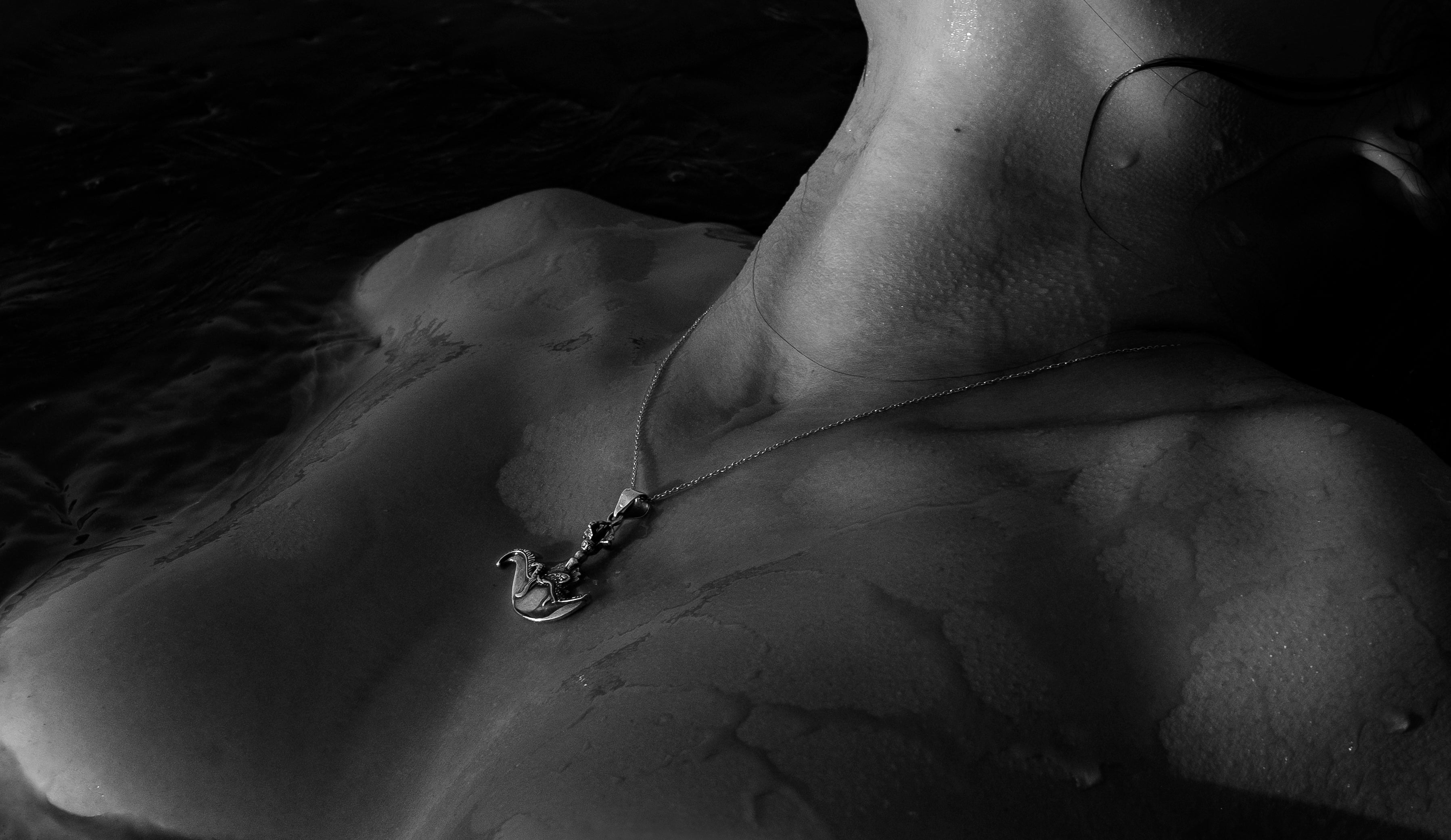Living with the Tension of Good and Bad
The dichotomy of good and bad has been a real stressor for me since my earliest days. In early adulthood, I took refuge in Buddhism, as its guidance helped me cope with anxiety. Its teachings reveal that everything is impermanent, interconnected, and without a fixed self. This perspective allows me to step back from my experiences, put life into perspective, and, above all, question the idea that good and evil are absolute truths.
Meeting the Dakini
Diving deeper, I discovered Tantric Buddhism, which engages with demonic figures to challenge the practitioner. Among these figures, I felt a strong connection with the Dakini—literally, “sky dancer,” sometimes described as a female demon—who challenges our notions of good and bad.
Questioning what is “good” or “bad” can be a remedy for anxiety for those afraid of doing wrong. It’s a tool of relativity that helps us understand the vast ocean of perspective.
The Necklace as a Daily Reminder
I am a creature of habits. This necklace I’ve been wearing day and night, seven days a week, for almost four years reminds me every day to release my attachment to worldly illusions and reclaim my personal power.

The Symbol of the Kartika
This necklace represents the Kartika, the weapon of the Dakini.
The Kartika is a sacred symbol of breaking free from self-imposed chains. Its curved blade, crowned with a compassionate hook, severs attachments to worldly illusions—a daily reminder of personal power.

For anyone clinging too long to what must be left behind, the Kartika is a tool of liberation. The Dakini wields it to cut through attachments, reclaiming power and freeing the spirit.
The Fierce Nature of the Dakini
Far from the expected gentleness of “angels,” Dakinis are fierce, unpredictable, and unsettling. They appear as inspirers, messengers, and sometimes tricksters, challenging habitual thinking to awaken the practitioner.
Through this play of mirrors and challenges, the Dakini transmits wisdom. A dancer along the edges of the conventional world, she embodies divine truth in motion, often with a fierce laugh, pushing the practitioner beyond their limits.
“To truly meet the Dakini, one must go beyond duality.”
— Khandro Rinpoche
Beyond Duality
She exists where no fixed category applies—neither good nor evil, pure nor impure, masculine nor feminine. In this sense, she is the Buddhist equivalent of a sacred trickster, a beneficial agent of chaos whose force overturns to liberate.


